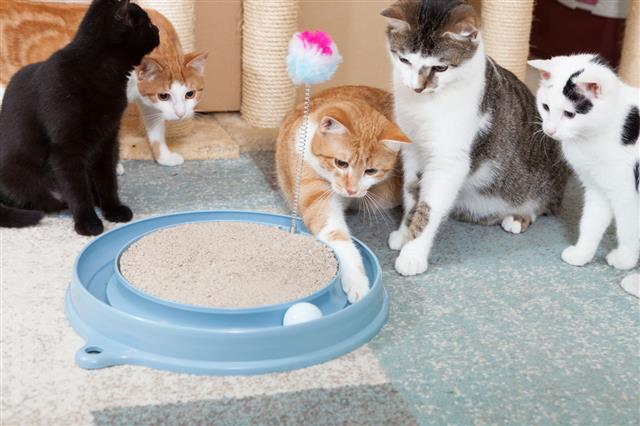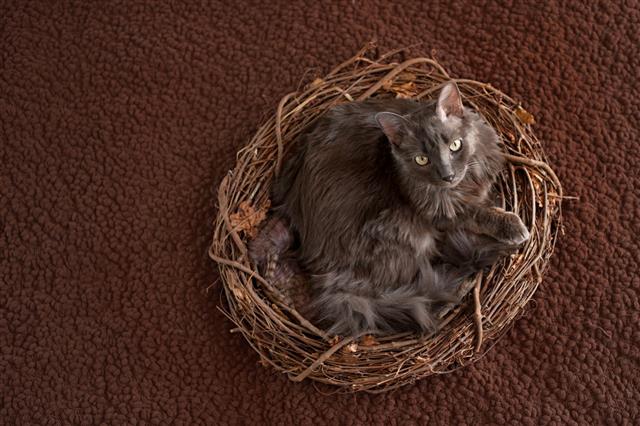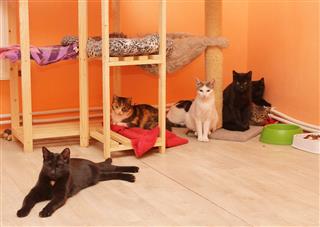
Breeding a cat is not as easy as it sounds. You can’t always let your kitty out and allow her to find itself a good match. There are a lot of things that you need to take care of Here’s how you can help her…
The breeding process of a cat is very similar to that of most other mammals. Broadly, it consists of three stages: the conception, the gestation period, and the delivery. A cat needs a lot of strength to go through these stages. Breeding is not just about having a lot of kittens to play with, it’s also about making sure that those kittens are cared for, and also that they find good homes in the future.
Tips for Breeding Cats
The heat cycle is the very first step of the process. It is the time during which the cat is ready for mating and allows a male to come near her. These cycles begin when the cat reaches an age of 6 months, and are repeated approximately every 2 weeks till the mating happens. The signs that will help you make out that your cat is in heat are:
- When you observe that your irritable and “please stay away from me” cat has suddenly turned very affectionate, take it seriously. It may be due to the fact that your cat is on a heat cycle.
- Though cats are known for their frankness when it comes to being loud and making their point clear, cats may become extra loud during the heat cycle, and may even screech. This is equivalent to mating calls used by the animals in the wild. So don’t forget to look out for the moods of the extra audible member of the family.
- A female on heat also tends to raise her rump when patted or stroked on her back. So make sure you notice this change in its posture.
- Raising the rump may also be followed by twitching the tail. A female uses this process to signal that she is ready for the mating process.
Once you come to know that your cat is on a heat cycle, you should start looking out for other factors, like finding a right mate, checking for health factors, and to check if the cat is of the right age. The female must have attained her full adult size before she is allowed to mate. The cat has to put all her energy into feeding and nursing the kittens, leading to her own incomplete growth. A cat should be at least 18-24 months old before she is allowed to start breeding. A male should be at least 18 months old before being allowed to breed.
Health reports are another important aspect that you need to take care of. Before the breeding season begins, you should get your cat checked for internal parasites, allergies, and infections. Also, you should get a thorough physical test done, in order to determine the weight and other important factors. The cat should also be administered all the vaccinations that keep various diseases at bay during the gestation period.
It’s always suggested that the cat should also be tested for genetic conditions, such as polycystic kidney disease, hip dysplasia, and various heart diseases, that may be passed on to the offspring. You can also go for personality tests to estimate the personalities the offspring may come up with. There’s always a chance that a grumpy cat will give birth to an offspring with the same personality, and who wants to see a bunch of grumpy cats bringing down the whole house? This is why it is important to choose the right mate.
Once done with all these checkups and evaluations that your cat is ready to reproduce, you can go ahead with the rest of the procedure. What remains is the actual mating, gestation, and the delivery. You just have to make sure that the cat finds the right partner, in order to avoid any infections that may pop up later.
You can confirm that a female cat has conceived after about 3-4 weeks. The gestation period lasts for approximately 65 days. During this time, the cat may get a little shy, and won’t like to be touched a lot. She will definitely prefer a safe corner where she won’t feel intruded and exposed. It may turn out not to be so playful and appreciative of your efforts. Just let her be, if she behaves weirdly. Just build her a safe home in a protected corner of your house, and let her rest as much she wants. Make sure she is fed properly and that she drinks a lot of water.
Be ready when you approach the 60th day of gestation. Delivering 5-10 days before or after the due date is normal.
Start preparing by building a safe corner where she can deliver the kittens. Make sure the place is dark and safe enough to make her feel comfortable. If the cat doesn’t find it good enough, she will start looking out for an appropriate one, and it may turn out to be your own very cozy bed. So, to prevent all these accidents, build a safe haven that the cat will love. Also, make sure it is dry, and that not many people cross that area. A cat needs to feel safe before she goes into labor.
Labor may last for anything between 20 minutes to several hours. Always keep the number of your vet handy, in case of an emergency you may need to rush her to the clinic. Also, keep looking for any signs of distress. A cat may have certain complications, and may need help. Otherwise, just let her be. If a delivery takes a lot of time, cats tend to rest between the contractions. If your cat allows it, you may also feed her in between the contractions, this will help her regain some strength.
As the kittens pop out, you can start noting down the basic statistics of the kittens, like their sex, weight, and color, for later use. A nail polish or natural paint may come handy if you choose to mark your kittens (please note that not all cats will allow this procedure, so don’t rush).
After the process is done, a cat normally licks her kittens clean. Help her along by cleaning the place thoroughly, to avoid any type of infections later. Another thing that you need to take care of is the number of placentas. They should equal the number of kittens. A cat eats up the placentas instantly because it provides her a lot of nutrition. So, don’t panic when she does something like that.
Afterwards, the cat prefers resting and you may not see her gamboling and playing for a week or so. In this period, keep tabs on her for any signs of weakness, and make sure that she is rested thoroughly.
In some days, you will see your cat and her ‘family’ coming out, playing, and being their feline self. This is the time for you to start looking for new homes for the newborns. It’s your responsibility now to find them a home where they will get loads of care and love. If you choose to keep them all, be ready to see your house in ruins some time in the near future, but also be assured that you will never be short of love.








